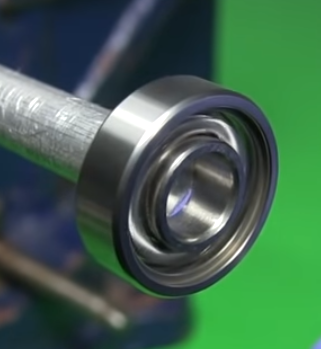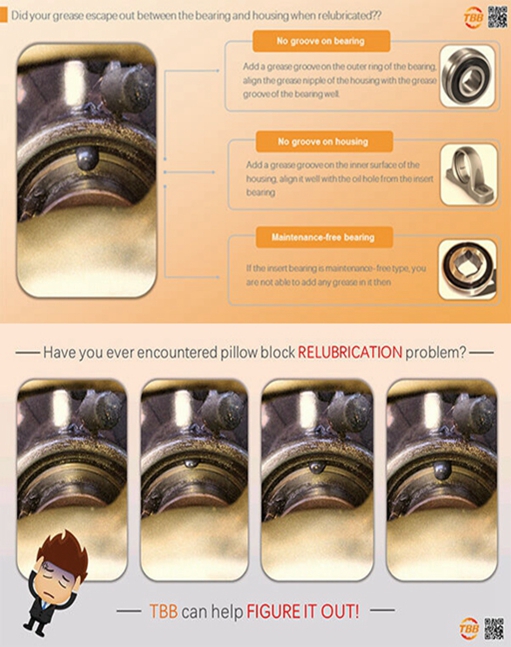We have assembled a wide variety of frequently asked questions (FAQs) about bearings (e.g. ball bearings, roller bearings, plain bearings, linear bearings) and bearing related products (and bearing services too). Just refer to the question you’re interested in below and you will be taken to a remarkably succinct, straight-forward, and accurate answer: Q1: Can bearings be refurbished? Yes, but it depends… Generally speaking, for small bearings it is uneconomical to attempt to refurbish a bearing product. However, for larger size bearings (6 inch bore and above) there potentially could be economic gains. In particular, bearings such as slewing rings, cylindrical roller bearings, and spherical roller bearings are candidates for refurbishing. But beyond the accumulated wear there are many other factors involved in this financial decision including maintenance cycles, lubrication, MTBF, environmental considerations and more. Q2: What’s The Difference Between Bearing Seals And Shields? Seals and shields are both in place to keep contaminants out of a bearing. In order of effectiveness, the enclosures that are offered are as follows: metal shields, rubber non-contact seals, Teflon non-contact seals, and rubber contact seals. Not surprisingly, as the sealing performance is increased, the torque required to turn the bearing will also increase due…
Periodic and thorough maintenance and inspection are indispensable to drawing full performance from bearings and lengthening their useful life. Besides, prevention of accidents and down time by early detection of failures through maintenance and inspection greatly contributes to the enhancement of productivity and profitability. Cleaning Before dismounting a bearing for inspection, record the physical condition of the bearing, including taking photographs.Cleaning should be done after checking the amount of remaining lubricant and collecting lubricant as a sample for examination. A dirty bearing should be cleaned using two cleaning processes, such as rough cleaning and finish cleaning.It is recommended that a net be set on the bottom of cleaning containers. In rough cleaning, use brushes to remove grease and dirt. Bearings should be handled carefully. Note that raceway surfaces may be damaged by foreign matter, if bearings are rotated in cleaning oil. During finish cleaning, clean bearings carefully by rotating them slowly in cleaning oil. In general, neutral water-free light oil or kerosene is used to clean bearings, a warm alkali solution can also be used if necessary. In any case, it is essential to keep oil clean by filtering it prior to cleaning.Apply anti-corrosion oil or rust preventive grease on…
Limiting speed values for instrument bearings are almost impossible to determine. However, generalizations may be made. Bearing size: Highest speeds may be obtained with the smallest bearing. However, extremely small miniature bearings usually have a thin, weak retainer and their maximum speed is less than medium-size miniatures. Load: Limiting speed is directly affected by the magnitude of applied load. Heavy loads result in a decreased speed capability. Use of a preloaded pair of bearings also decreases allowable speed. Ring rotation: Inner-ring rotation gives higher speed capability. If the outer ring is rotating, limiting speed must be reduced by about one-third. Retainer: Phenolic (and some other nonmetallic materials) — very high speed; crown (hardened steel) — high speed; ribbon (loosely clinched) — low speed; full race — moderate speed; spacers (PTFE) — very low speed. Lubricant: Stiff, mineral-oil grease — high speed; soft, synthetic-oil grease — moderate to high speed; soft, silicone grease — low to moderate speed; mineral oil — high speed; synthetic oil — moderate speed; silicone oil — low speed. Lubricant method: Oil impregnation and grease pack — excellent; oil impregnation — very good; grease pack — good; minimum oil — fair. Machine Design
Heat is generated either by shearing of the oil film or by rubbing contact. In hydrostatic and hydrodynamic bearings, heat generation at running speeds is the result of oil shear, and the amount of temperature rise can be estimated if oil viscosity and shear rates are known. Temperature can be regulated by controlling the oil flow through the bearing or by using external cooling. Heat is generated either by shearing of the oil film or by rubbing contact. In hydrostatic and hydrodynamic bearings, heat generation at running speeds is the result of oil shear, and the amount of temperature rise can be estimated if oil viscosity and shear rates are known. Temperature can be regulated by controlling the oil flow through the bearing or by using external cooling.DO YOU WANT TO KEEP UP WITHTHE LATEST DESIGN NEWS FOR MANUFACTURING?YES, I NEED TO KNOWNO, NOT RIGHT NOW High-speed and close-clearance fluid-film bearings are difficult to cool. The flow rate through a journal bearing consists of a hydrodynamic portion and a hydrostatic portion. The hydrodynamic flow is proportional to RCw/2 multiplied by a constant which is a function of load or eccentricity e. Here, R = bearing radius, in.; C = clearance, in.; and w = journal speed, rpm. The…
Now we have the correct equipment for the corresponding application and now comes the turn to the installation. An incorrect installation can reduce the useful life of an equipment due to premature failure caused by several defects. The effects are shown in the following graph: The most common errors in the installation of equipment that reduce the life of the bearings are: 1. Misalignment of the shaft in relation to the driving equipment. Perfectly aligned shafts avoid unnecessary loads on the bearings.It is very easy to detect alignments with vibration analysis and then confirm this cause by means of an analysis of the bearing failure.To avoid this cause of failure there is a large number of aligning instruments on the market that use lasers that are very precise and nowadays very friendly and easy to use without further training. 2. Unbalance. An unbalance also generates unnecessary loads that will cause premature bearing failures. To verify the balance, a vibration analysis must be used, which is able to detect this type of defect very precisely. 3. Mechanical looseness. This problem has increased lately because the designs are increasingly optimized by downsizing, which makes them lighter and less rigid. This defect in…
● Functions of a lubricant If rolling bearings are to operate reliably they must be adequately lubricated to prevent metal-to-metal contact between the rolling elements, raceways and cages. Separation of the surfaces in the bearing is the primary function of the lubricant, which must also inhibit wear and protect the bearing surfaces against corrosion. In some applications the lubricant is also used to carry away heat. The choice of a suitable lubricant and method of lubrication for each individual bearing application is therefore important, as is correct maintenance. Lubricants for rolling bearings serve the following functions: * Separate the rolling contact surfaces in the bearing; * Separate the sliding contact surfaces in the bearing; * Protect highly finished bearing surfaces from corrosion; * Provide sealing against contaminants (in the case of grease); * Provide a heat transfer medium (in the case of oil). ● Re-lubrication of pillow block The purpose of any bearing, housed or not, is to reduce the amount of friction between connected or interacting components. The right bearings also reduce the amount of wear-and-tear on the equipment. This, in turn, increases the longevity and operational capabilities of the machinery which requires some form of lubrication. A single…





